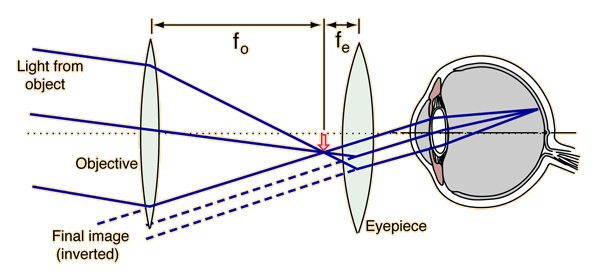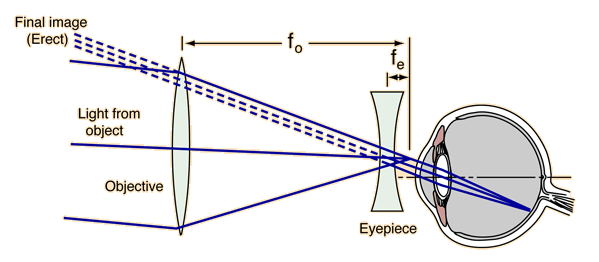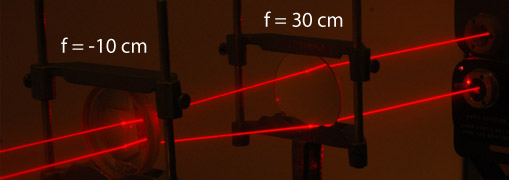The Astronomical Telescope
The astronomical telescope makes use of two positive lenses: the objective, which forms the image of a distant object at its focal length, and the eyepiece, which acts as a simple magnifier with which to view the image formed by the objective. Its length is equal to the sum of the focal lengths of the objective and eyepiece, and its angular magnification is -fo /fe , giving an inverted image.

The astronomical telescope can be used for terrestrial viewing, but seeing the image upside down is a definite inconvenience. Viewing stars upside down is no problem. Another inconvenience for terrestrial viewing is the length of the astronomical telescope, equal to the sum of the focal lengths of the objective and eyepiece lenses. A shorter telescope with upright viewing is the Galilean telescope.
| Calculation for finite object distance |
Lens concepts
Optical instruments
| HyperPhysics***** Light and Vision | R Nave |

